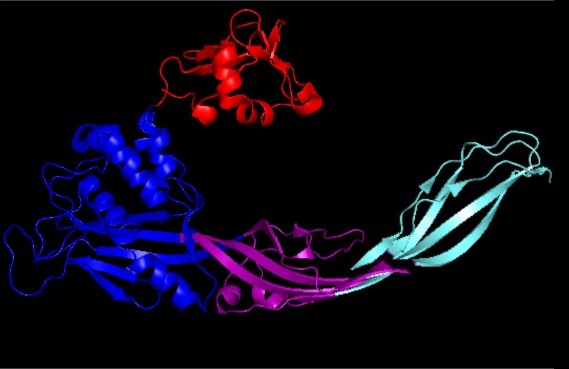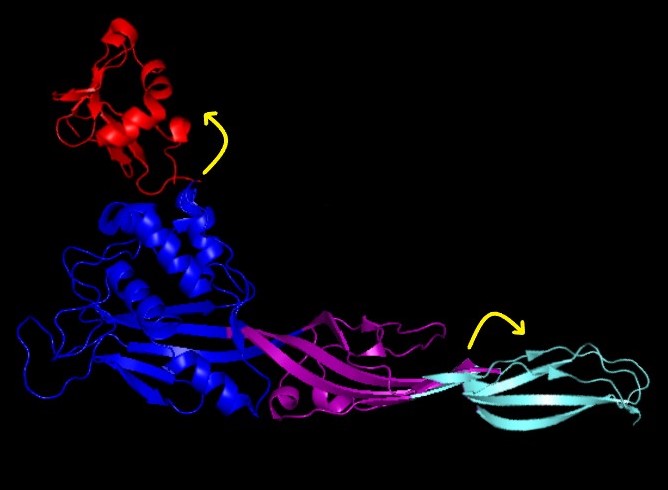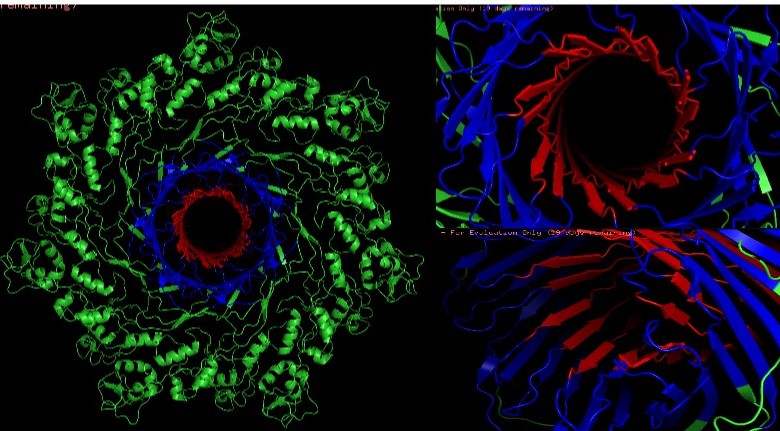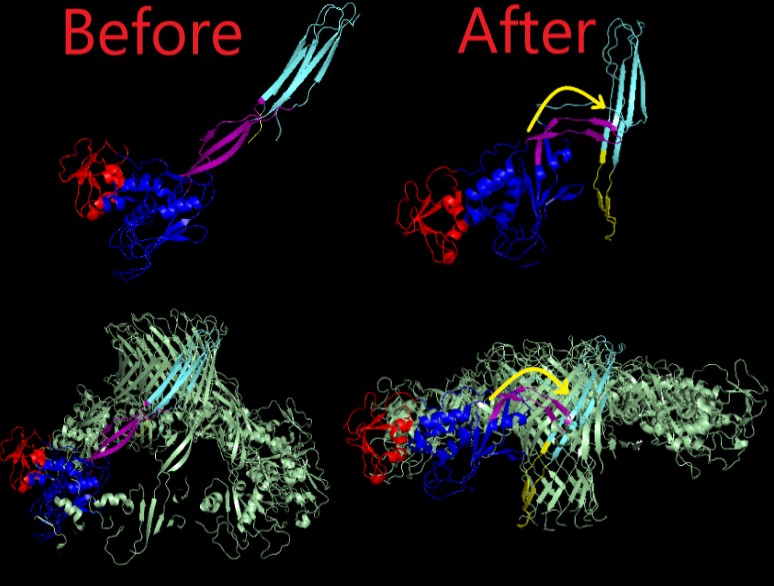User:Davi de Souza/Sandbox 1
From Proteopedia
Aerolysin
General Aspects and function
Aerolysin is a toxin synthesized by some species of bacteria belonging to the genus Aeromonas, such as Aeromonas hydrophila. The exact function of Aerolysin may vary among different species and strains of Aeromonas. However, it is known that it is the main macromolecule responsible for the pathogenicity of Aeromonas hydrophila, being associated with diarrheal diseases and deep wound infections [1].
Aerolysin plays several roles in the pathogenicity of Aeromonas sp. One of its main functions is its ability to promote lysis (rupture) of host cells, such as epithelial cells and immune cells. Aerolysin exhibits cytotoxic activity, causing damage to the cell membranes of host cells, which can lead to cell death and contribute to the bacterium's pathogenicity. The aerolysin's insertion in the cell membrane creates a pore that allows the permeabilization and potentially leads to the processes described above. Furthermore, aerolysin may be involved in the invasion and dissemination of the bacterium within the host. It can assist in tissue degradation, facilitating the bacterium's invasion into different organs and tissues of the host. Additionally, there are other proteins and virulence factors produced by Aeromonas spp. that also play important roles in the pathogenicity of these bacteria. [2]
About the toxin's structure, it is setted up in an oligomeric structure with the activated forms of the monomers called proaerolysin. As a memeber of pore-forming toxins (PFTs), aerolysin has the unique property to exist both as a soluble protein, which is the unactivated form of the monomer, and as a transmembrane complex, which is the circular oligomer formed by the assemble of the monomers with conformational changes (activated forms).
| |||||||||||
Biotechnological applications of aerolysin
In addition to its biological importance, aerolysin has also sparked interest in the field of nanotechnology due to its potential as a sensor in nanopore sequencing. In this technique, a nucleic acid molecule is passed through a nanopore, and individual nucleotide bases are detected and identified through characteristic changes in the electrical or ionic signal generated during the translocation. By observing the nature of aerolysin pores, some scientists have begun to explore the use of aerolysin pores in sequencing. Several aerolysin mutants used in nanopore sequencing have shown promising results, demonstrating excellent sensitivity, selectivity, and stability. [5]
References
- ↑ Altwegg M, Geiss HK. Aeromonas as a human pathogen. Crit Rev Microbiol. 1989;16(4):253-86. PMID:2649316 doi:10.3109/10408418909105478
- ↑ Janda JM, Abbott SL. Evolving concepts regarding the genus Aeromonas: an expanding Panorama of species, disease presentations, and unanswered questions. Clin Infect Dis. 1998 Aug;27(2):332-44. PMID:9709884 doi:10.1086/514652
- ↑ Parker MW, Buckley JT, Postma JP, Tucker AD, Leonard K, Pattus F, Tsernoglou D. Structure of the Aeromonas toxin proaerolysin in its water-soluble and membrane-channel states. Nature. 1994 Jan 20;367(6460):292-5. PMID:7510043 doi:http://dx.doi.org/10.1038/367292a0
- ↑ Iacovache I, De Carlo S, Cirauqui N, Dal Peraro M, van der Goot FG, Zuber B. Cryo-EM structure of aerolysin variants reveals a novel protein fold and the pore-formation process. Nat Commun. 2016 Jul 13;7:12062. doi: 10.1038/ncomms12062. PMID:27405240 doi:http://dx.doi.org/10.1038/ncomms12062
- ↑ Wang Y, Gu LQ, Tian K. The aerolysin nanopore: from peptidomic to genomic applications. Nanoscale. 2018 Aug 7;10(29):13857-13866. PMID:29998253 doi:10.1039/c8nr04255a




